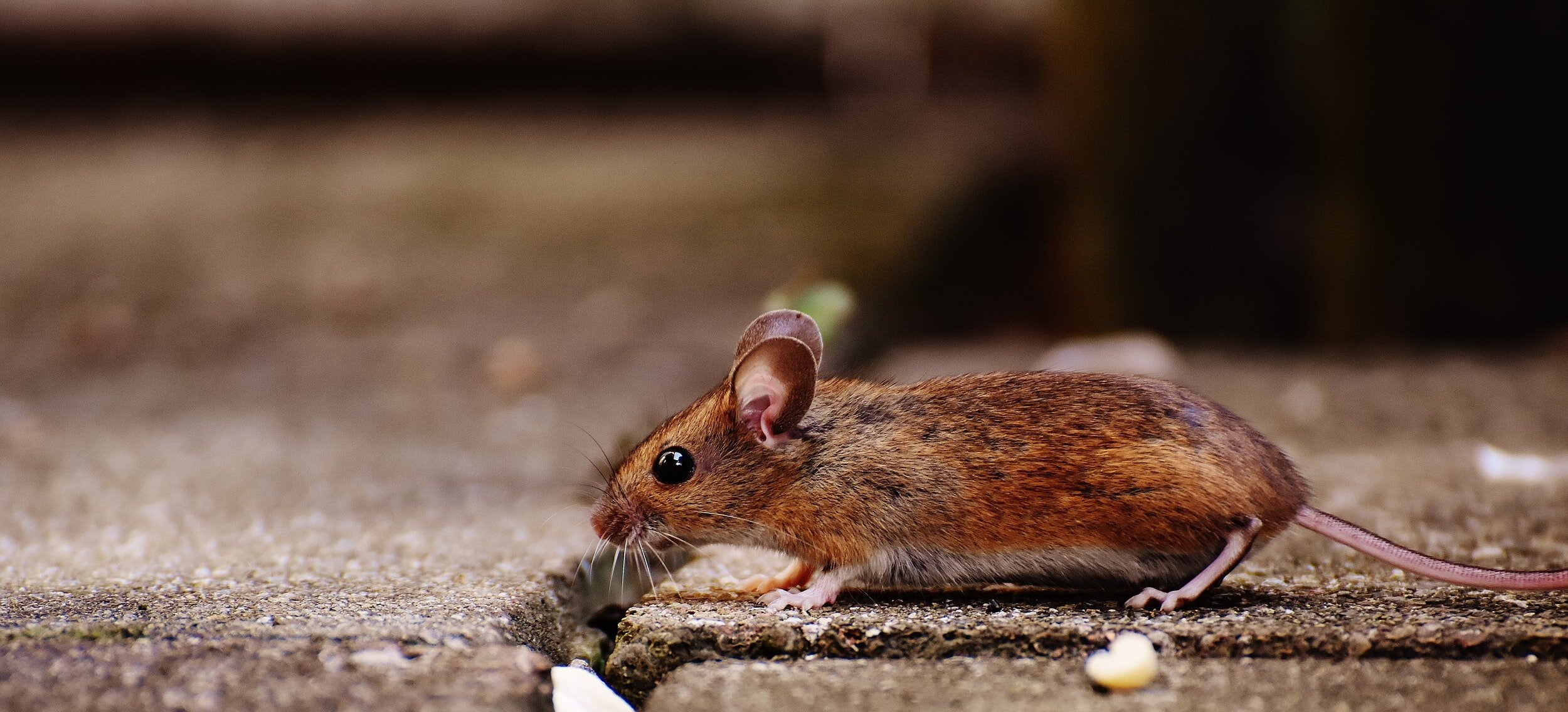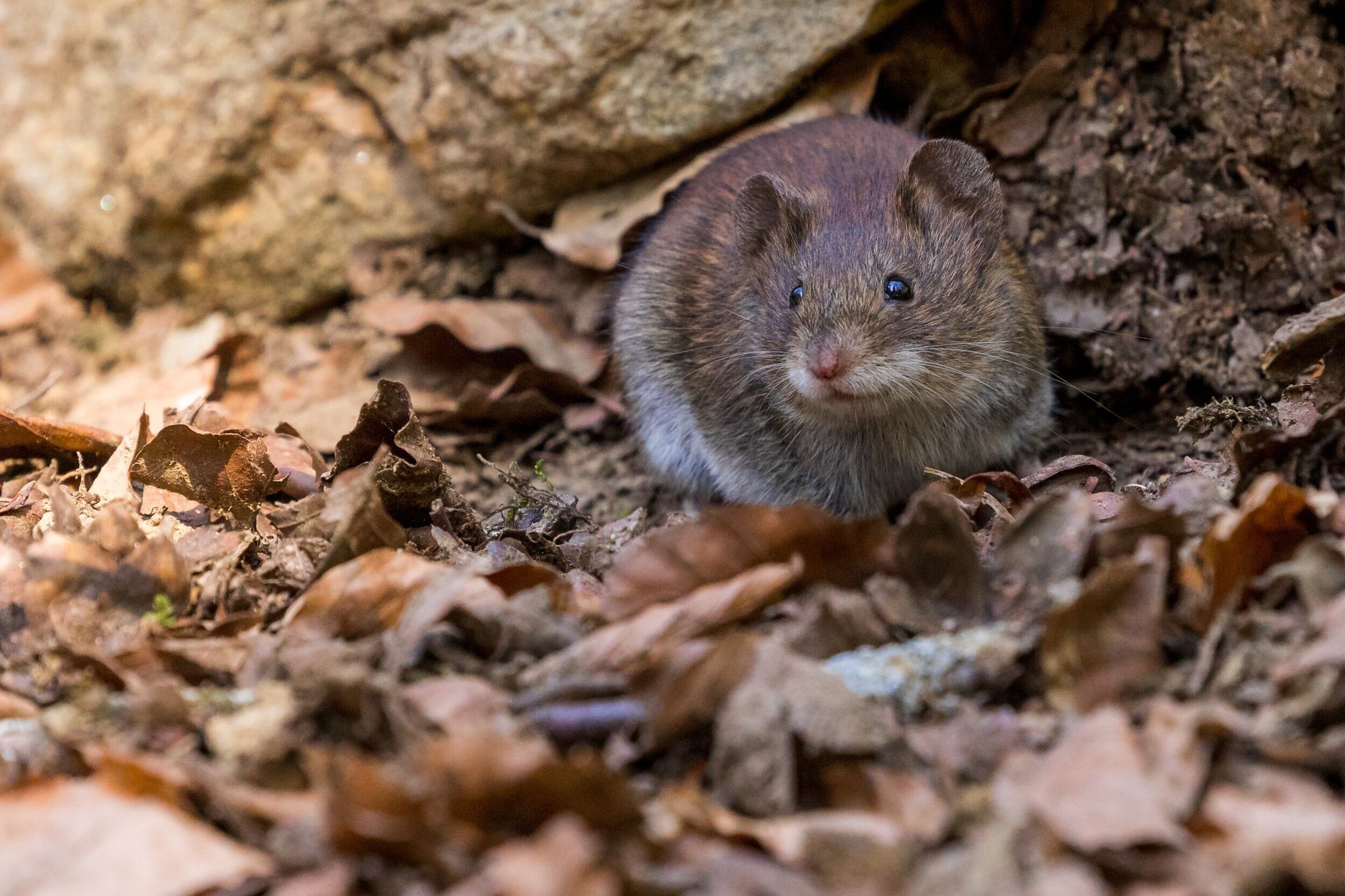
LIVING IN HARMONY WITH RODENTS
GENERAL TIPS:
Remove any food, water, and shelter that may attract rodents, including:
Pet food, seeds, fruit
Pet water bowls, leaky pipes, hoses
Wood piles, shrubberies close to the ground, things that aren't moved regularly (RVs, boats, old cars, etc.)
Keep your cats indoors.
Make sure your trash cans have tight lids and are secured so they cannot be knocked over.
Put heavy gauge mesh on vents, openings to structures, and under sheds.
Pick up fallen fruit. Try to pick ripe fruit off of trees. Band tree trunks with sheet metal to prevent climbers.
Do not leave windows or sliding doors without screens open or unattended.
Never intentionally feed a wild animal! Feeding wildlife increases human encounters, which endangers animals and harms the ecosystem.
DO NOT USE RODENTICIDE (RAT POISON)
NEVER use poison. Poison impacts the whole food chain and is dangerous to all animals, including owls, foxes, and even your own pets. Just one poisoned rat can kill a whole family of owlets or a beloved family pet. For more information, visit Raptors are the Solution.
To remove rodents, you need to remove the food, water, or shelter source that’s attracting them. Other options include installing a raptor perch or an owl box, or using humane deterrent options.
HUMANE DETERRENT OPTIONS:
Cayenne Pepper. Sprinkle around holes or frequented spaces.
Homemade pepper spray
Boil several hot peppers, an onion, and one tablespoon of cayenne pepper in 2 quarts of water for 20 minutes. Strain the liquid and spray it around trash cans, plants, flower beds, tree trunks, and the outside of buildings. Not only is there an unpleasant odor to this mixture, but it is uncomfortable on raccoons’ paws and they will learn to stay away. The effects of this spray are temporary, so you’ll need to reapply it every 2 or 3 days—or after any rain. (source)

RODENT FAQ
-
- Change your trash day habits. Place your trash outside the morning of pick-up instead of the night before. Double-bag your trash. Place your bags inside of a trash bin. Secure trash bin lids with a bungee cord or place a weight on top.
- Properly store your trash bins. Place them in a protected area or secure them to your home or garage. Place them on level ground where they cannot be tipped over as easily. Place them in the line of sight of a spotlight or motion-detecting light.
- Use animal repellent. Repellents use scent, taste, or a combination of both to drive animals away from the protected area. Sprinkle granular animal repellent around the area where trash cans are stored. Additionally, spray a liquid animal repellent directly onto trash bags, trash cans, or recycling bins as you place them curb-side. Humane options include cayenne pepper, Critter Ridder, and Shake-away.
-
SBWCN has partnered with a local woodworker for custom-made owl boxes, with a portion of proceeds benefiting SBWCN. These boxes are made-to-order at $180 and take 2-4 weeks for production. Delivery and installation are available for an additional cost within Santa Barbara County. For more details, contact Jonas at (805) 621-4592.
-
In summer and fall, rats and other mammals may dig holes in lawns. To mitigate this, first identify the problem.
If there are sources of food, water or shelter, this will attract animals to your lawn. If possible, eliminate or block off these food, water, or shelter sources.
- Examples of food sources: pet food, seeds from bird feeders, fruit on fruit trees (tip: band fruit trees with sheet metal to prevent climbing animals)
- Examples of water sources: leaky pipes and hoses, pet water bowls, ground-level bird baths, koi ponds
- Examples of shelter sources: wood piles, shrubberies close to the ground, things that aren’t moved regularly (cars, boats, covered RVs, piles of junk)
If you have animals like skunks or gophers digging holes in your lawn, try using animal repellent. Humane options include cayenne pepper, Critter Ridder, and Shake-away.
-
Live-trapping and relocation is inhumane. If animals are introduced into areas they are unfamiliar with, they do not know where food, water, or shelter sources are. There may be other animals in the area that have diseases to which the introduced animal has never been exposed. The introduced animal may be encroaching on another's territory.
Trapping is only a temporary solution. The reasons animals are visiting your property must be addressed before they stop visiting. If you get rid of one, another will simply take its place.
Traps often do not catch the intended targets. Other animals, including pets, are just as likely to enter traps. Animals caught in traps often injure themselves trying to escape.
